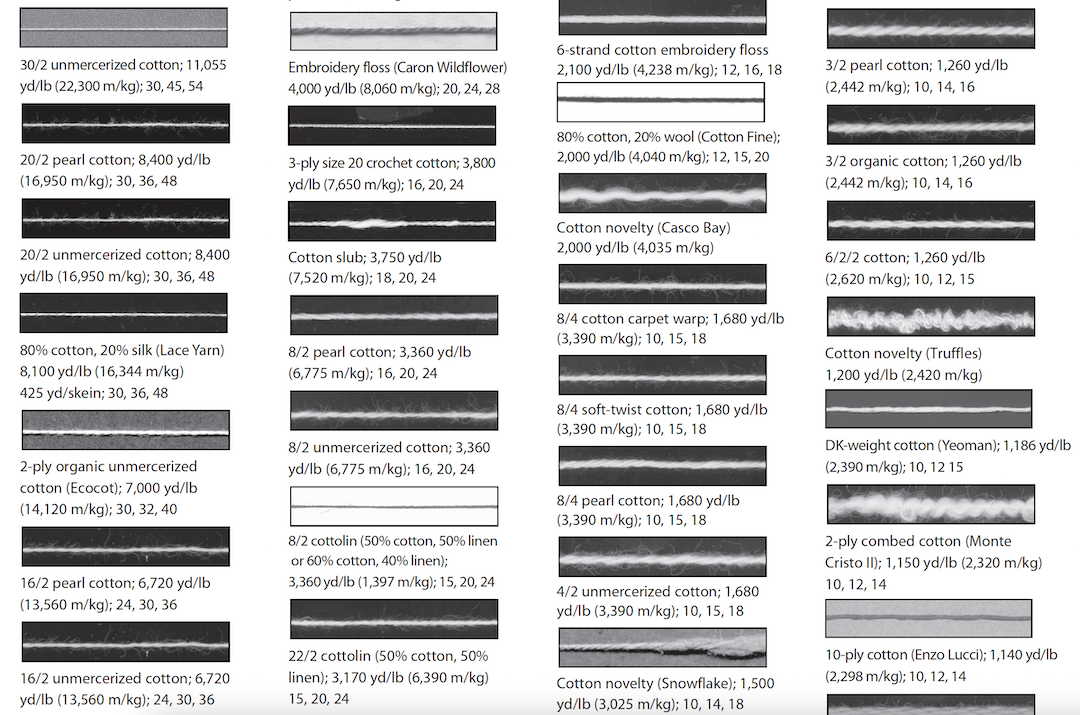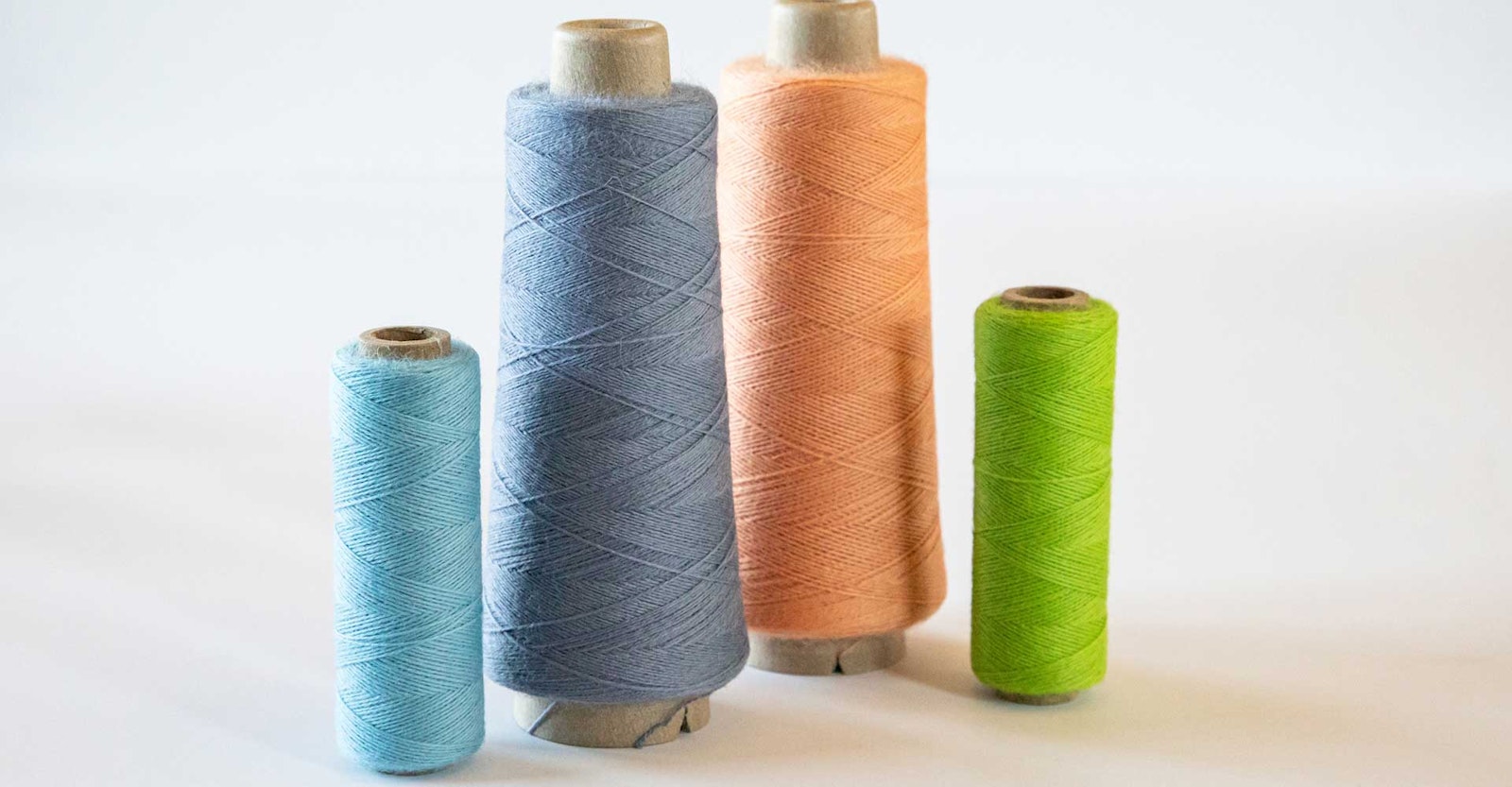Lately, I’ve had an increase in folks emailing me about how to either figure out what they can weave with a specific yarn not represented in the magazine or how to choose a substitute yarn for a project. For both types of queries I have the same answer: Look to the Master Yarn Chart.
If you don’t know about the Master Yarn Chart, you are in for a treat. For years at Handwoven we would collect and scan samples of every single yarn used in an issue (Every. Single. One.) The scans would then go in the back of the magazine and later, into the Master Yarn Chart, along with basic information about the yarn: fiber content, yardage per pound, meterage per kilogram, and suggested setts for lace weaves, plain weaves, and twill. The chart was then organized by fiber type with all cotton and cotton blends together, silk and silk blends, wool and wool blends, etc.
Let’s use a recent question to explain how to use the Master Yarn Chart. A reader asked me about a project that used doubled 8/2 cotton in a 10-dent heddle. She wanted to know if she could use quadrupled 16/2 cotton or single 8/4 cotton instead, and if so, how would that affect the final cloth? At first glance, it makes sense that 16/2 would be half the size of 8/2 cotton and 8/4 would be twice the size, but weaving yarns are never that easy. Off to the Master Yarn Chart!
 Just a snippet of the Master Yarn Chart cotton section. In it, you can see the entries for 8/2, 16/2, and 8/4 cottons.
Just a snippet of the Master Yarn Chart cotton section. In it, you can see the entries for 8/2, 16/2, and 8/4 cottons.
Looking at the chart, I can see that 8/2 cotton is 3,360 yd/lb and has a plain-weave sett of 20. On the other hand, 16/2 cotton is double the yardage per pound of 8/2 cotton at 6,720 yd/lb, but the suggested plain-weave sett is 30, not 40. So if you wanted to weave the same project with 16/2 cotton, you’d want to use the yarn tripled, not quadrupled.
Now let’s look at the 8/4 cotton. It comes in at half the yards per pound of 8/2 cotton (1,680 yd/lb) but again, the plain-weave sett isn’t 10, it’s 15. I was able to give the reader all this information in minutes, thanks to the Master Yarn Chart.
I use the chart all the time in my own weaving life to figure out yarn substitutions and setts. If you view the PDF or print it out at 100 percent, all the yarn scans are true to size, so you can compare mystery yarns from your stash to the ones on the list. If I’m planning a project and can’t remember what yarn size will work at which sett, I just pull out the Master Yarn Chart. Now, it’s not complete or perfect, but there’s much to love about this tool. It’s helped me more times than I can count, and I hope it helps you out a bit, too!
Happy Weaving!
Christina
PS. We do plan to update the chart again someday. We’re just trying to figure out the logistics of doing so.

